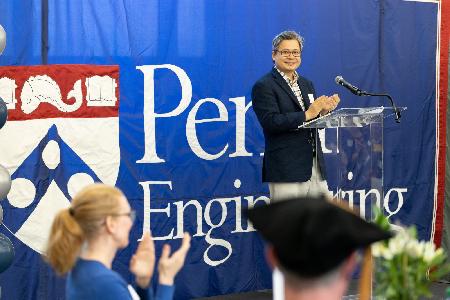Written by Technically Media CEO Chris Wink, Technical.ly’s Culture Builder newsletter features tips on growing powerful teams and dynamic workplaces. Below is the latest edition we published. Sign up here to get the next one this Friday.
The CEO of a small boutique creative agency made a long list of new employee engagement strategies to combat the Great Resignation. He bought books and found coaches and launched a lunch-and-learn program for his suddenly fully distributed team. He’s reviewing an endless stream of marketing pitches about new tools and SaaS platforms promising improved employee satisfaction. Recently he surveyed his employees: What would most motivate you to do your best work here? The response was resounding: Increase salaries.
The agency CEO admitted his salary ranges weren’t above average, but he was still surprised by the uniformity of the response. Lots of surveys show employees want more than just comp from their employers, and he had increased the company’s 401k match, among other perks. None of that seemed to matter much. This summer, he was focused on adjusting his expectations for hiring; he’s now started his year-end budget planning with a focus on retention.
Talent-hungry companies from higher-cost markets have found their salary ranges can be more competitive elsewhere. I’ve spoken to mid-Atlantic CEOs and HR pros who have lost applicants to Tesla, Facebook and Google, among others, in the last year. Some big tech companies have attempted to correct for regional cost of living differences when hiring remotely, but this has been blasted by some as appearing cheap. For many well-funded or highly profitable tech companies, it’s just easier to keep their ranges consistent.
This has the effect of exporting salaries from Silicon Valley and New York City to Asheville and Pittsburgh. Tiny 70,000-person Wilmington, Delaware is now one of the country’s most active remote-work hiring hubs. Whether this is a lasting transformation or transitory will remain opaque for some time. Regardless, this is having real-world consequences for growing companies hiring now.
A product CEO in a low-cost city told me a competitive $120,000 engineer salary she offered two years ago is now looking like $200,0000. Another told me he halted his hiring process for a product manager role he had hired for at $60,000 in recent memory. His finalists thought the salary should be nearly double that. “I can’t make that work right now,” he said.
Software salaries were already growing faster than other parts of the economy because of this. Tech-adjacent professionals have benefited. Pandemic remote work just gave this momentum a shove forward.
Structural issues will remain. In 1981, Sherwin Rosen wrote an influential paper called “The Economics of Superstars” that argued technology would increasingly allow an ever-smaller group of elite professionals to command ever-higher salaries as their work reached near-limitless scale. Streaming platforms for musicians and television rights for athletes are classic examples of the trend. Accelerating remote work could be another chapter.
This is particularly acute for those hiring technologists. Famously, Bill Gates said that “a great lathe operator commands several times the wages of an average lathe operator, but a great writer of software code is worth 10,000 times the price of an average software writer.”
A software engineer’s work could be infinitely scalable — effective code for a Google product might be used by billions of people trillions of times. In contrast, I am writing this column once, and though the web allows our archives to be visited and revisited, it won’t power others like great code might.
Software salaries were already growing faster than other parts of the economy because of this. Tech-adjacent professionals have benefited. Pandemic remote work just gave this momentum a shove forward.
This spring it was still unclear how widespread wage inflation would become. Now the answer seems clearer. The Social Security Administration may set its 2022 cost of living adjustment up as high as 6%, the highest rate in 40 years and as much as triple recent annual figures. Though just one in 10 companies report using that index to set compensation, it still serves as a credible benchmark. For average-growth companies and roles, then, plan for compensation adjustments in the range of 3 to 5%, even just to keep pace.
This pandemic is well known for the uneven distribution of its ill effects. CEOs in boom markets and HR pros in COVID-ravaged portions of the economy are in very different situations. This much is personal for me. The digital services Technical.ly offers, including employer brand marketing, have grown faster than ever before — yet the live-events portion of our business collapsed amid pandemic pickdowns. This gives us a mixed financial message. Now is the time to realign staffing, and corresponding salaries.
That agency CEO I spoke to this week is experiencing that. He may have been competitive in his local environment but that’s changed. “I have employees showing me salary data from New York and San Francisco and asking me to meet them.”
As he attempts to hire new employees with remote-salary demands, his current staff will experience what labor economists call “wage compression” — even a fair salary could look undervalued. A hiring manager once told me: Always put your current team’s needs above those you’re recruiting. That means salary adjustments now. Use year-end budgeting and benchmarking to align. If you were recruiting for this role now, would the salary be different? This will be harder for companies and industries that have had a difficult pandemic. Without investing in your current staff, things could get much more challenging.
And now the links.
Sign up for the Culture Builder newsletterWhat else we’re reading
- Payscale Survey Shows 81% Of Employers Do Not Have Compensation Strategy For Remote Workers Post-Pandemic
- 6 Counterintuitive Rules for Being a Better Manager — Advice from Lambda School, Quip & Facebook
- Why it may be time for a more compassionate bereavement policy
- Ambition Is Overrated
Company culture stories we’ve published lately
- How should your company celebrate Hispanic Heritage Month?
- How URBN’s culture of creativity inspires technologists to build their own career path
- Settling down for the long haul at 14 West
- The new US-EU trade council will discuss data privacy and climate tech. Its first meeting location? Hazelwood Green
- How are coding bootcamps changing?
Before you go...
Please consider supporting Technical.ly to keep our independent journalism strong. Unlike most business-focused media outlets, we don’t have a paywall. Instead, we count on your personal and organizational support.
Join our growing Slack community
Join 5,000 tech professionals and entrepreneurs in our community Slack today!

A new model for thinking about how to grow regional economies: the Innovation Ecosystem Stack

Delaware’s next governor will be an entrepreneur. Here’s why Matt Meyer thinks it matters.

Can the nation’s biggest cyber hub even handle Craiglist founder’s $100M security pledge?


